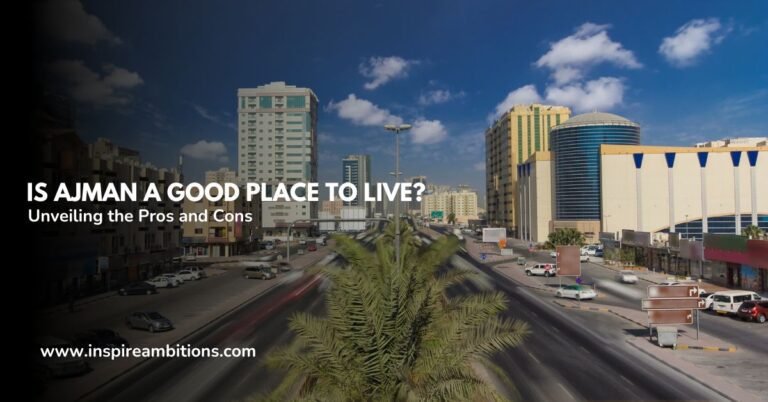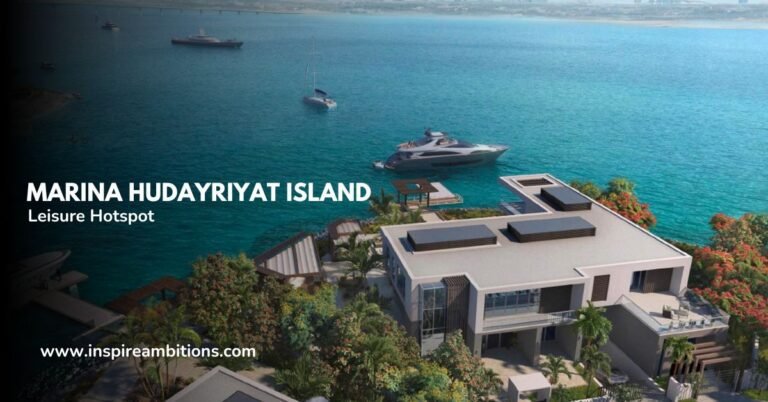Atracciones turísticas en el desierto de Abu Dhabi
Gran Mezquita Sheikh Zayed
The Sheikh Zayed Grand Mosque is an architectural masterpiece and one of the largest mosques in the world. With a capacity for over 40,000 worshippers, it features 82 domes and over 1,000 columns. The exquisite white marble exterior and intricate inlaid designs make it a must-visit attraction for tourists in the Abu Dhabi desert.
Emirates Palace Hotel
The Emirates Palace Hotel is a luxurious 5-star hotel showcasing Arabian culture with a majestic facade and beautifully landscaped gardens. The hotel offers world-class amenities, including fine dining restaurants, expansive pools, and a private beach. Guests can experience a truly opulent stay surrounded by the mesmerising desert landscape.
Yas mundo acuático
Yas Waterworld is a thrilling waterpark on Yas Island, offering over 40 adrenaline-pumping rides and attractions. A desert-themed setting provides a refreshing break from the heat of Abu Dhabi. Families can enjoy a variety of slides, wave pools, and lazy river experiences, making it a popular destination for tourists.
Louvre Abu Dabi
El Louvre Abu Dabi is an art and civilisation museum that showcases a magnificent collection of art, artefacts, and historical pieces from various parts of the world. With its unique architecture resembling a floating dome, the museum offers interactive exhibits and educational sessions for visitors to gain more insight into the rich history of human civilisation.
Ferrari World Abu Dabi
Ferrari World Abu Dhabi is a thrilling amusement park home to the world’s fastest roller coaster, Formula Rossa. With over 29 rides and attractions, it offers an authentic Ferrari experience for all ages. The theme park also features immersive attractions like go-karting, simulators, and live shows, allowing visitors to experience the Ferrari brand amidst the stunning backdrop of the Abu Dhabi desert.
Flora and Fauna of Abu Dhabi Desert
The Abu Dhabi Desert is home to various unique flora and fauna species, making it an essential part of the emirate’s natural heritage. The plants and animals in this region have adapted to withstand the harsh desert environment.
Among the flora found in the Abu Dhabi Desert, many species can survive due to their ability to conserve water and tolerate high temperatures. The hardy vegetation includes ghaf trees, native grass species, y plantas tolerantes a la sal. These unique plants are crucial in maintaining the desert ecosystem and supporting its wildlife inhabitants.
In terms of fauna, the Abu Dhabi Desert’s biodiversity is quite impressive. Several mammal species can be observed thriving in this environment, including the Arabian oryx, el sand cat, y el sand fox hare 1. There are also smaller desert dwellers, such as gerbils, hedgehogs, y geckos2.
The desert habitat is not only limited to land animals, as recent studies have shown an increase in bird species, primarily due to the growing lushness of the region. In particular, the diverse avifauna can be spotted in the parks during the spring and autumn. There are over 427 bird species in the Abu Dhabi Emirate, including migratory and resident ones.
For reptile and amphibian enthusiasts, the desert terrain provides the ideal habitat for 54 species, ranging from lizards to snakes5. Moreover, the desert is inhabited by an estimated 2,219 invertebrate species, further highlighting the ecosystem’s rich diversity6.
Overall, the flora and fauna of the Abu Dhabi Desert are well-adapted to their surroundings, thriving in this unique region that fosters biodiversity. These lifeforms contribute significantly to the richness of the desert ecosystem, making it an essential part of the United Arab Emirates’ natural treasures.
Cultural Aspects of the Abu Dhabi Desert
The Abu Dhabi desert plays an essential role in the history and cultural heritage of the United Arab Emirates. The Bedouin people and their way of life were shaped by their relationship with the desert, which has profoundly impacted the contemporary culture of Abu Dhabi.
One of the most outstanding examples of ancient heritage is the Hili Archaeological Park, where visitors can explore the remnants of an ancient civilisation that thrived in the Arabian desert. The park features well-preserved structures and artefacts dating back to the Bronze Age, offering a glimpse into the lives of the people who inhabited the region thousands of years ago.
The desert has also influenced local culinary traditions, with dishes such as hares and khabees originating from the Bedouin lifestyle. The preparation and consumption of Gahwa (Arabic coffee) is another integral part of Emirati culture. It has its roots in the desert, where coffee plays a significant role in social gatherings and hospitality.
Handicrafts and traditional arts have been passed down through generations, reflecting the resourcefulness and creativity of the people bound by the desert’s constraints. These crafts include pottery, weaving, and metalwork, showcased in museums and cultural centres throughout Abu Dhabi.
In addition to tangible cultural aspects, the desert has formed solid societal values such as resilience, hospitality, and generosity. These values are deeply ingrained in the daily lives of Emiratis and continue to be preserved and upheld, allowing Abu Dhabi to evolve while honouring its roots.
As Abu Dhabi strives to uphold its cultural heritage, it also recognises the need for conservation and preservation efforts. Initiatives such as the Maqta Conservation Area protect the natural environment and archaeological sites, allowing generations to appreciate the rich history and significance of the desert.
In summary, the desert has profoundly shaped the culture and identity of Abu Dhabi, fostering a strong connection between the people and their environment. As Abu Dhabi continues to progress, it remains committed to preserving and celebrating this cultural bond, ensuring that the spirit of the desert is never forgotten.
Safaris en el desierto
Abu Dhabi offers an array of desert safaris that cater to different preferences, allowing tourists to experience the essence of the UAE’s heartland. From adrenaline-fueled dune-bashing adventures to tranquil and eco-friendly nature and heritage safaris, there’s something for everyone.
One popular option is the evening desert safari, which provides a luxury experience, beginning at just 149 AED. Guests can immerse themselves in the desert culture and traditions while enjoying beautiful sunsets. The sunrise desert safari is another option for those who prefer early-morning adventures.
For thrill-seekers, high adrenaline dune bashing rides are a significant attraction. These safaris usually include exciting activities like quad biking, sandboarding, and camel trekking. Falcon experiences are also offered in specific packages, allowing tourists to get up close and personal with Abu Dhabi’s spectacular wildlife.
In addition to the adrenaline-packed options, eco-friendly nature and heritage safaris are available. These excursions focus on the region’s rich cultural background, natural beauty, and unique flora and fauna. Visitors can explore the stunning desert landscapes, learn about the local way of life, and even sample authentic Emirati cuisine. These safaris provide a more relaxed and informative experience for those seeking a deeper connection with the UAE’s environment and history.
Selecting the best desert safari for your Abu Dhabi trip depends on your preferences and interests. Tour operators offer various packages, durations, and prices to suit all needs and budgets.
Abu Dhabi Desert’s Impact on UAE Economy
The Abu Dhabi desert plays a significant role in the United Arab Emirates’ economy, shaping the region’s development and diversification. In recent years, despite rapid urbanisation, the desert’s vegetation has grown exponentially, providing new opportunities for economic growth. According to a 50-year study, there has been an almost twenty-fold increase in plant cover as cities like Dubai, Abu Dhabi, and Al Ain expanded. This growth positively impacts the economy by providing sustainable resources and paving the way for innovative industries.
One crucial aspect of Abu Dhabi’s economic diversification is its focus on developing a sustainable and diversified economy. The government aims to reduce dependency on oil and invest in renewable energy, such as solar power, to tackle land degradation and desertification challenges. Significant efforts have been made towards pushing back the encroaching deserts, as mentioned in a government report published in 2019.
Furthermore, Abu Dhabi has numerous technological and business incubators, such as Hub71. These initiatives support the growth of small and medium-sized enterprises (SMEs) and the development of a start-up ecosystem, enabling the UAE to become the most preferred destination for foreign companies and start-ups in the Middle East.
In conclusion, the Abu Dhabi desert’s impact on the UAE economy is multifaceted. The increased vegetation and focus on sustainability create new opportunities for economic growth. At the same time, the push towards diversification and technological initiatives allows for a more robust and resilient economy in the face of challenges posed by desertification and land degradation.
The Challenges Facing Abu Dhabi Desert
The vast desert landscape of Abu Dhabi, known as the Empty Quarter, covers 70% of the emirate’s land and is the world’s most enormous uninterrupted sand mass. Despite its natural beauty and importance, the desert faces numerous challenges, such as urbanisation, encroachment, and conservation of wildlife and plants.
One of the primary challenges is the encroachment of the desert on the remaining fertile land. The UAE’s rapid urbanisation has led to the expansion of human settlements, roads, and infrastructure, which has put pressure on the fragile desert ecosystem. In response, initiatives like the Al Marzoom Reserve partnership have been established to conserve desert wildlife and local plants in Abu Dhabi.
The vastness of the desert also presents logistical challenges regarding infrastructure development, water scarcity, and waste management. These issues require innovative solutions that respect the desert’s delicate balance and address the needs of the growing population sustainably.
Recreational activities such as off-road driving and desert trekking, while popular in the region, can cause damage to the fragile desert ecosystem. Events like the Abu Dhabi Desert Challenge y Caracal Challenge aim to promote responsible tourism and raise awareness of the desert’s biodiversity and the importance of preserving it.
Efforts to mitigate the impact of climate change on the desert are essential, as it can lead to more frequent and severe sandstorms, prolonged periods of drought, and loss of biodiversity. By addressing these challenges through conservation efforts, sustainable development, and responsible tourism, Abu Dhabi can continue to preserve its desert landscape’s unique beauty and importance.
The Future of the Abu Dhabi Desert
The future of the Abu Dhabi desert holds promise for sustainability and technological advancements. As desertification threatens the food supply in Dubai, the region’s fledgling green tech sector is working diligently to combat the encroaching sands. One example of innovation in the face of desertification is using renewable energy.
In the deserts of Abu Dhabi, the Masdar initiative is emerging as a critical player in building sustainable infrastructure and promoting green technology. Masdar is responsible for establishing a greener tomorrow not just for the United Arab Emirates but for the entire world. One of their most notable accomplishments is the large-scale implementation of solar power across the region.
Another futuristic development making waves in the region is the Saudi desert’s Mirror Line City, a 105-mile-long city stretching from the Red Sea eastward across the desert. The city’s design features a walled interior enclosed by a mirrored façade, showcasing innovative architectural feats aimed at sustainability and exploration.
Furthermore, in the heart of the Abu Dhabi desert lies Al Ain, an oasis city home to the Middle East’s first destination for white water rafting at Al Ain Adventure Park. The park is just one example of the region’s commitment to developing innovative tourist attractions while preserving the natural beauty of the desert landscape.
As the capital of the United Arab Emirates, Abu Dhabi is undertaking massive strides to transform itself from a once-sleepy desert town into a thriving metropolis and significant tourism destination. This involves blending traditional culture with modernity, carefully balancing the preservation of the desert landscape with cutting-edge technologies and sustainable practices. The future of the Abu Dhabi desert looks bright as it embraces its unique environment while aiming for progress and innovation.






